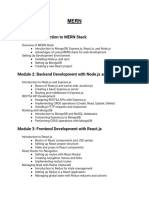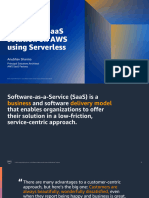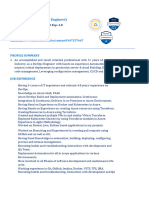0% found this document useful (0 votes)
54 views6 pagesMERN Syllabus
The document outlines a Full Stack Web Development course using the MERN stack, covering a duration of 16-20 weeks with practical and lecture components. It includes prerequisites such as basic HTML, CSS, and JavaScript knowledge, and aims to teach students to design, develop, and deploy scalable web applications. The course is divided into modules focusing on web development fundamentals, API building with Express.js, database integration with MongoDB, front-end development with React.js, and full-stack integration and deployment.
Uploaded by
eswari.genfotechinnovationsCopyright
© © All Rights Reserved
We take content rights seriously. If you suspect this is your content, claim it here.
Available Formats
Download as DOCX, PDF, TXT or read online on Scribd
0% found this document useful (0 votes)
54 views6 pagesMERN Syllabus
The document outlines a Full Stack Web Development course using the MERN stack, covering a duration of 16-20 weeks with practical and lecture components. It includes prerequisites such as basic HTML, CSS, and JavaScript knowledge, and aims to teach students to design, develop, and deploy scalable web applications. The course is divided into modules focusing on web development fundamentals, API building with Express.js, database integration with MongoDB, front-end development with React.js, and full-stack integration and deployment.
Uploaded by
eswari.genfotechinnovationsCopyright
© © All Rights Reserved
We take content rights seriously. If you suspect this is your content, claim it here.
Available Formats
Download as DOCX, PDF, TXT or read online on Scribd
/ 6
























































































